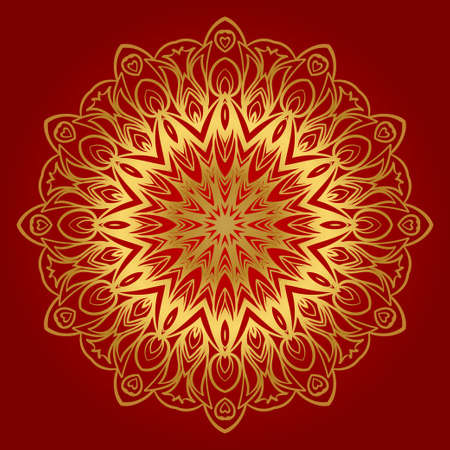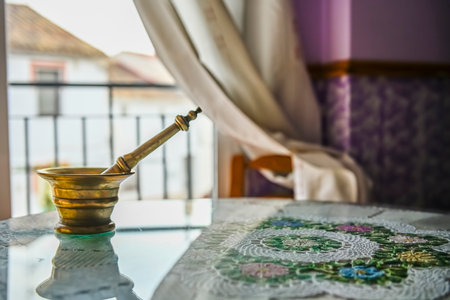1. Understanding the Water Element in Vastu Shastra
In the vibrant realm of Vastu Shastra, the five elements—Earth, Water, Fire, Air, and Space—form the foundation of harmonious living. Among these, the water element holds a special place in Indian homes, deeply intertwined with health, prosperity, and emotional balance. Water is seen as a carrier of life force (prana), representing purity, flow, and adaptability.
According to ancient Vastu principles, the ideal placement for water features such as wells, ponds, or aquariums is the North-East (Ishan) direction. This direction is governed by Lord Shiva and considered highly auspicious for inviting positive energies. When water is correctly positioned within your home layout, it is believed to promote mental clarity, calmness, and a smooth flow of wealth.
Many Indian families experience the impact of water’s energy daily—whether through the gentle sound of a fountain in the puja room or the presence of sacred Ganga jal (water from the River Ganges) used during rituals. Emotional well-being is often linked with the soothing qualities of water: it cools anger, nurtures relationships, and helps create a peaceful atmosphere.
By understanding the water element’s significance in Vastu Shastra, you lay the groundwork for creating a space that supports both material abundance and inner tranquility. Integrating this knowledge into your home design not only aligns you with traditional Indian wisdom but also enhances your family’s overall harmony and happiness.
2. Best Colours for Vastu Water Element
In Indian tradition, the selection of colours in your home is not just an aesthetic choice—it is deeply rooted in the Vastu Shastra principles that harmonise energies and support well-being. The water element, associated with flow, calmness, and prosperity, finds its balance through specific hues that reflect its gentle yet powerful nature.
Auspicious Colours for Water Element
To invite the blessings of the water element into your living spaces, consider incorporating shades that evoke the serenity and purity of water bodies. Below are the most recommended colours according to Vastu:
| Colour | Significance in Vastu | Suggested Application |
|---|---|---|
| Aqua Blue | Represents clarity, peace, and emotional balance; closely connected to flowing rivers and lakes. | Feature walls in bedrooms, cushions, curtains, or dining room decor. |
| Sea Green | Symbolises growth, freshness, and harmony; reminiscent of lush aquatic life. | Bathroom tiles, study area accents, indoor planters. |
| Subtle Whites | Brings purification and enhances spaciousness; reflects the tranquil surface of still waters. | Main wall colour in living rooms or puja spaces; furniture highlights. |
Thoughtful Integration in Different Spaces
Infusing these auspicious colours into your home requires mindful placement aligned with both Vastu directions and practical design sensibilities. For instance:
- North-East Direction: Ideal for water elements—opt for aqua blue or sea green here to amplify positive vibrations.
- Bathrooms & Wash Areas: Use subtle whites and soft blues to create a sense of cleansing and renewal.
- Puja Rooms: Incorporate white or light blue drapes and mats to foster spiritual calmness during prayers.
Blending Traditional Wisdom with Modern Aesthetics
The beauty of Vastu lies in its flexibility. You can blend these auspicious water element colours with modern Indian décor—think handloom blue cushion covers, sea-green ceramic vases from local artisans, or white marble tabletops. This approach not only aligns your home with cosmic energies but also supports local crafts while enhancing overall harmony.

3. Traditional Indian Decor That Invokes the Water Element
When you wish to infuse your home with the gentle, nurturing qualities of the water element as per Vastu Shastra, turning to traditional Indian décor is both a beautiful and culturally resonant choice. The water element is deeply revered in Indian culture, symbolising purity, abundance, and emotional flow. By incorporating age-old accents and handcrafted pieces, you can create a home environment that not only aligns with Vastu principles but also feels uniquely Indian at its heart.
Urli Bowls: Flowing Positivity
The urli bowl is a classic feature in many South Indian homes. Traditionally made from brass or bronze, these wide-mouthed vessels are often filled with water and adorned with floating flowers, petals, or even candles. Placing an urli near the entrance or in the northeast direction attracts positive vibrations and honours the water element according to Vastu. The gentle movement of water combined with vibrant floral colours creates a tranquil and welcoming atmosphere.
Brass and Copper Vessels: Echoes of Tradition
Brass and copper have been integral materials in Indian households for centuries. Using these metals for water storage or as decorative items resonates with Vastu’s energy principles. Displaying antique lotas (water pots), kalash (sacred pitchers), or intricately engraved tumblers not only celebrates India’s artisanal heritage but also amplifies the calming influence of water energy throughout your space.
Hand-Painted Motifs: Artistic Celebrations of Water
Indian homes are often adorned with wall art and motifs inspired by rivers, lotus flowers, peacocks, and fish—each carrying symbolic meaning related to the water element. Incorporating Madhubani paintings from Bihar, Pattachitra from Odisha, or blue pottery from Rajasthan introduces fluid shapes and soothing blue hues that connect your interiors to nature’s cycles. These hand-painted accents enrich your décor while honouring cultural traditions and inviting serenity into daily life.
By embracing these traditional Indian décor elements, you weave together the energies of water and culture, creating a home that feels harmonious, spiritually charged, and distinctly Indian.
4. Materials and Textures Ideal for Water Energy
When it comes to infusing your home with the soothing essence of the Vastu water element, selecting the right materials is paramount. According to traditional Indian wisdom, certain native materials such as glass, silver, and natural stone not only harmonise with water energy but also help foster a calm, flowing atmosphere within your living spaces. Understanding how to incorporate these elements thoughtfully can make a tangible difference in your home’s aura and overall harmony.
Key Materials that Amplify Water Energy
| Material | Vastu Significance | Ideal Placement |
|---|---|---|
| Glass | Transparency and flow; invites clarity and openness | Windows, water feature decor, dining areas |
| Silver | Pureness and receptivity; considered auspicious in Indian homes | Pooja rooms, decorative bowls, kitchen utensils |
| Natural Stone (e.g., Marble, Granite) | Earth-water synergy; grounds energy while enhancing flow | Flooring in bathrooms, entranceways, meditation corners |
| Ceramics/Clay Pots | Nurturing moisture; balances fire and water elements together | Indoor planters, water vessels in living rooms or verandahs |
| Blue Mosaic Tiles | Evoke riverine movement and calmness | Bathroom walls, garden fountains, balcony floors |
Sensory Textures for a Calming Effect
The texture of these materials also plays a significant role. Smooth surfaces like polished glass or marble mimic the gentle flow of water, while cool metallic finishes in silver reflect light and bring subtle illumination reminiscent of moonlight on a lake. Textured stones or tiles add an organic touch, grounding water’s fluidity into tactile experience.
Traditional Indian Usage Tips:
- Avoid sharp edges: Opt for rounded shapes to maintain harmonious flow—sharp angles can disrupt the peaceful energy of water.
- Balance with soft textiles: Complement hard surfaces with soft cotton or silk drapes in blue or white hues to reinforce tranquillity.
- Cultural accentuation: Place silver lotas (vessels) filled with water in the North-East corner for spiritual upliftment—a well-loved tradition across India.
The Essence of Flow: Bringing It All Together
By consciously choosing these native materials and their corresponding textures, you create an environment where water energy nurtures both body and spirit. Let your selection resonate with intention—embracing Vastu’s holistic approach for true harmony at home.
5. Placement and Direction for Water Harmony
According to Vastu Shastra, the placement and direction of water elements within your home play a crucial role in balancing energies and enhancing positivity. For optimal harmony, it is strongly recommended to position water features such as fountains, aquariums, or water bowls in the North or North-East zones of your residence. These directions are considered auspicious and are closely associated with Lord Kubera, the deity of wealth, and the natural flow of cosmic energy.
Why North and North-East Matter
The North direction is governed by Mercury (Budh), symbolising prosperity and new opportunities, while the North-East is ruled by Jupiter (Guru), which brings wisdom and spiritual growth. Placing water elements in these zones invites abundance, mental clarity, and peace into your living space. In contrast, placing water features in the South or South-West may disturb family harmony or lead to financial instability.
Water Features for Positive Vibes
When adding a fountain or aquarium, ensure that the flow of water is inward towards the house, signifying wealth entering your life. Running water represents vitality; stagnant water should be avoided as it can attract negative energy. Popular choices among Indian homes include brass urli bowls with floating flowers, small indoor waterfalls, or fish tanks with auspicious goldfish—each enhancing serenity and prosperity when placed correctly.
Practical Guidance for Placement
Always keep water features clean and well-maintained. Avoid placing them under staircases or directly facing the main door. For apartments or smaller homes, even a symbolic water painting on a Northern wall can evoke calming energies. By aligning your home’s water elements with Vastu principles, you not only create a beautiful ambience but also support emotional balance and overall wellbeing for everyone residing in the space.
6. Practical Tips for Everyday Water Element Enhancement
Bringing the Vastu water element into daily life is a gentle, mindful practice that can deeply enrich your homes energy and overall harmony. Here are some simple rituals and habits, rooted in Indian tradition, to help you invite the calm, flowing energy of water into your living space.
Begin Your Day with Abhishekam
Start your mornings by performing abhishekam—ritualistic water offering—at your home temple or a small altar. Pour fresh water over a Shiva Lingam or sacred idol while chanting mantras or simply setting an intention for clarity and peace. This ancient practice not only purifies the mind but also sets a serene tone for the day ahead.
Light Diyas Near Water Bowls
Place a bowl of clean water in the north or northeast corner of your home, aligning with Vastu directions. In the evenings, light an oil diya (lamp) beside the bowl. The dancing flame reflected on water creates a tranquil ambiance and is believed to dispel negative energies, inviting positive vibrations into your household.
Keep Water Sources Fresh & Flowing
Ensure that all drinking water containers, pitchers, and decorative fountains are kept clean and replenished daily. Stagnant or dirty water is seen as an obstacle to prosperity and health in Vastu Shastra. Flowing, clear water represents abundance and supports emotional balance.
Meditative Moments by Water Features
If you have an indoor fountain or aquarium, spend a few mindful minutes each day observing the movement of water or fish. Let this quiet time serve as a meditative pause—connecting you to the element’s natural calmness and fostering resilience amid lifes busyness.
Infuse Colours & Natural Elements
Enhance your routines by incorporating Vastu-approved colours like gentle blues, aqua greens, or silver accents in textiles, tableware, or prayer cloths near water features. Complement with natural materials such as clay pots or brass bowls for a grounded, soulful touch.
Rituals for Special Occasions
During festivals like Diwali or Holi, include water rituals such as sprinkling Ganga jal (sacred river water) at entrances or sharing sweetened water with guests. These gestures not only uphold cultural traditions but also deepen your connection to the purifying energy of water at home.
By infusing these mindful practices and simple rituals into everyday life, you can nurture peace, vitality, and auspiciousness—allowing the Vastu water element to truly harmonise your living environment in an authentically Indian way.


